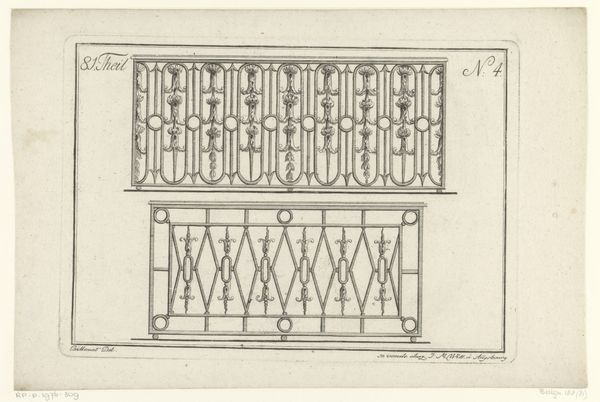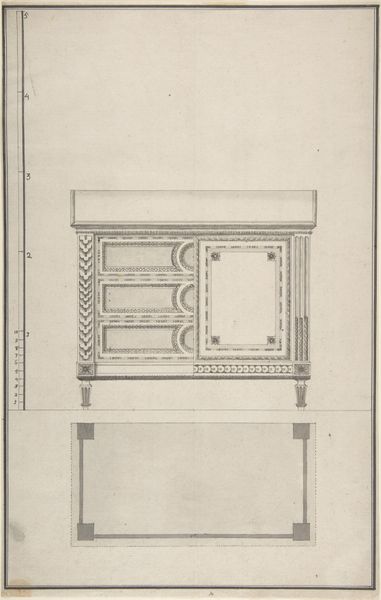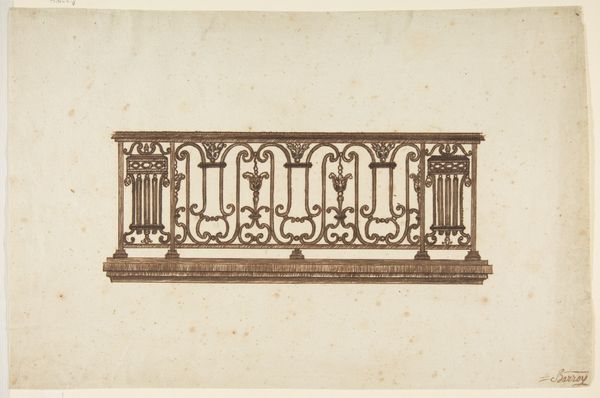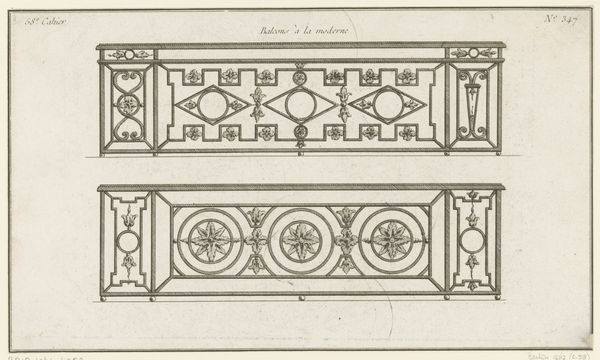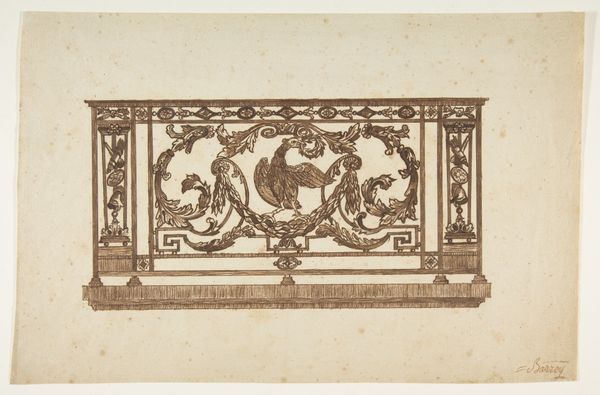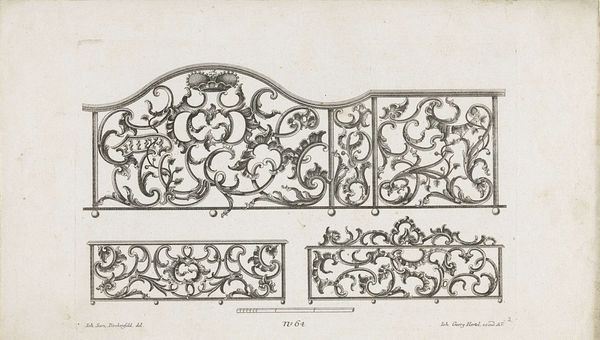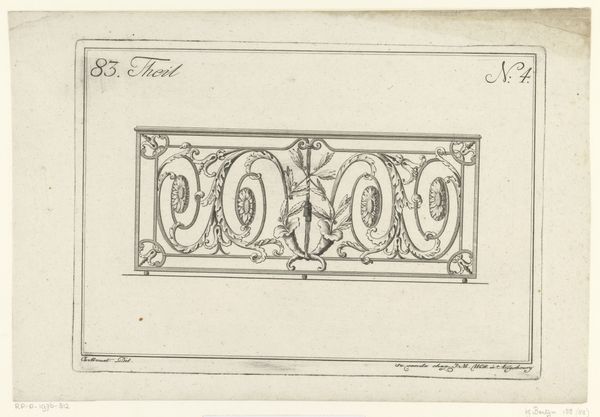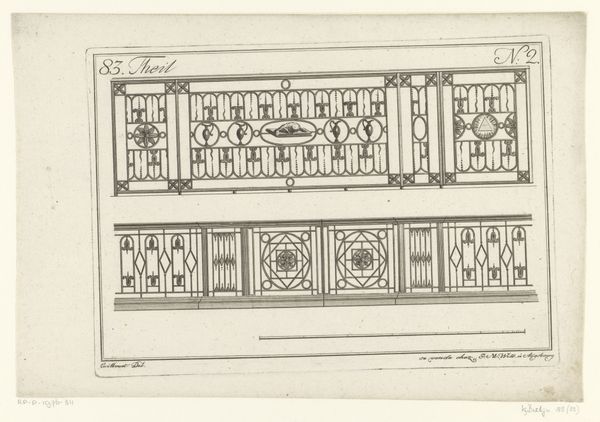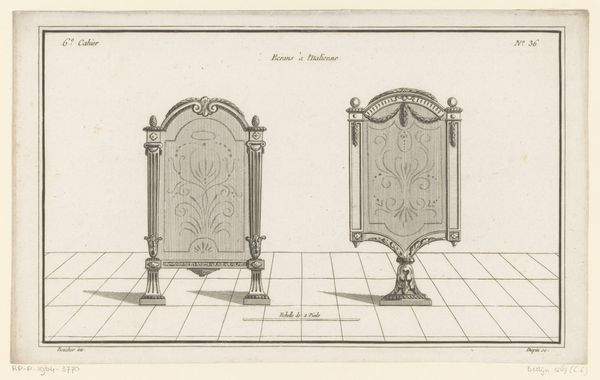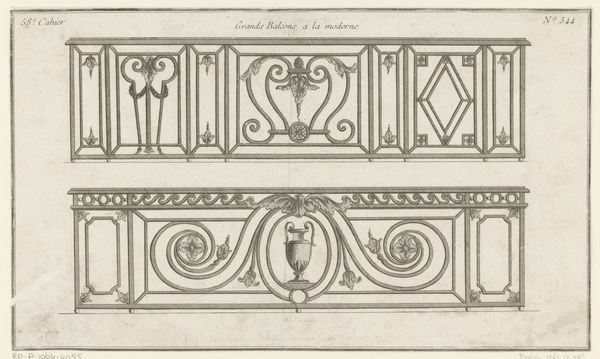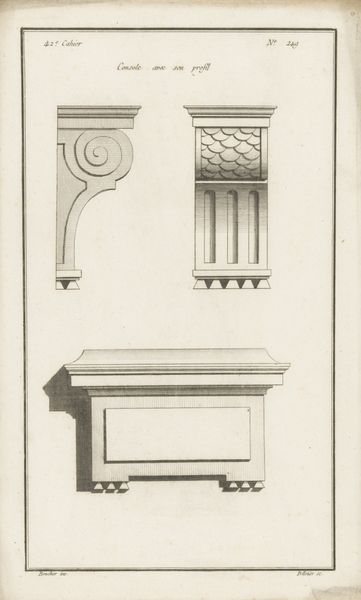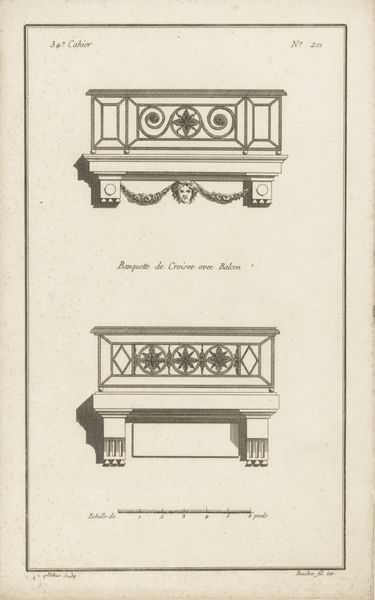
drawing, print, metal, etching, engraving, architecture
#
drawing
# print
#
metal
#
etching
#
etching
#
engraving
#
architecture
Dimensions: height 204 mm, width 286 mm
Copyright: Rijks Museum: Open Domain
Editor: We're looking at "Twee hekwerken," or "Two Fences," an etching and engraving from the late 18th century, housed in the Rijksmuseum. It depicts two different fence designs, one more geometric and the other quite decorative. I'm struck by the contrast, it feels like two different eras. What can you tell me about these designs? Curator: Well, let's consider the societal function of fences at this time. Were they simply boundaries or something more? In the 18th century, architectural details like these fences were potent signifiers of status and power. The designs speak to the social hierarchies and aesthetic values of the elite. How does the ornate design speak to you versus the geometric? Editor: The ornate one definitely feels more... exclusive, almost like it's trying too hard. The geometric design seems more modern, even though it's older. It’s making me think about who these fences were meant to keep in, or out, and how design plays a role in that power dynamic. Curator: Exactly. And consider the materials: metal, worked in such elaborate ways, represents not just wealth, but also the control of resources and labor. How might the choice of metal relate to the historical context of colonialism and the extraction of resources during this period? It’s important to analyze how these fences act as material expressions of social control. Editor: So, seeing them as architectural drawings, they also are tools of power? Curator: Precisely. They reflect an era defined by empire, class division, and evolving aesthetic values. Think about how design choices always serve to shape power dynamics within the structures of society. Editor: That's really changed how I see these fences, from simple designs to statements about society. Curator: Right. It's about understanding art as active agents in historical and political narratives. It really makes you wonder, who commissioned them, and who would have installed them? These pieces have many stories to tell.
Comments
No comments
Be the first to comment and join the conversation on the ultimate creative platform.
